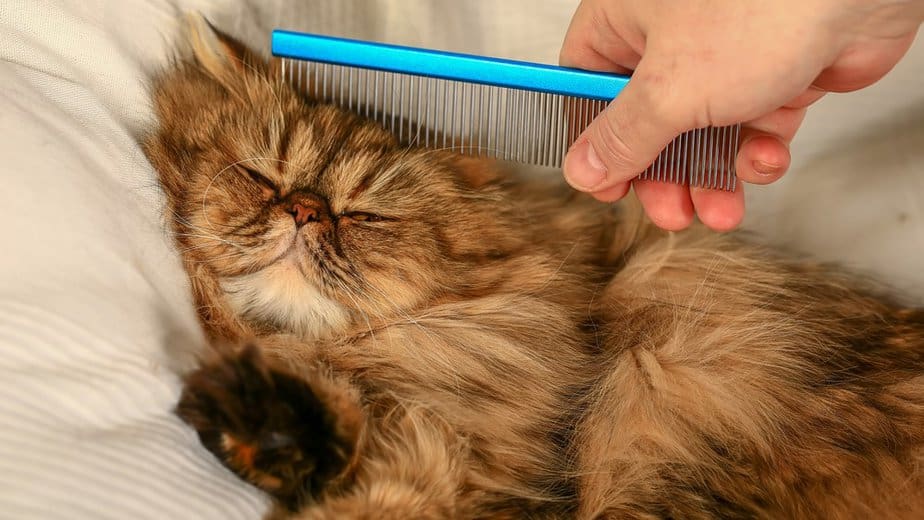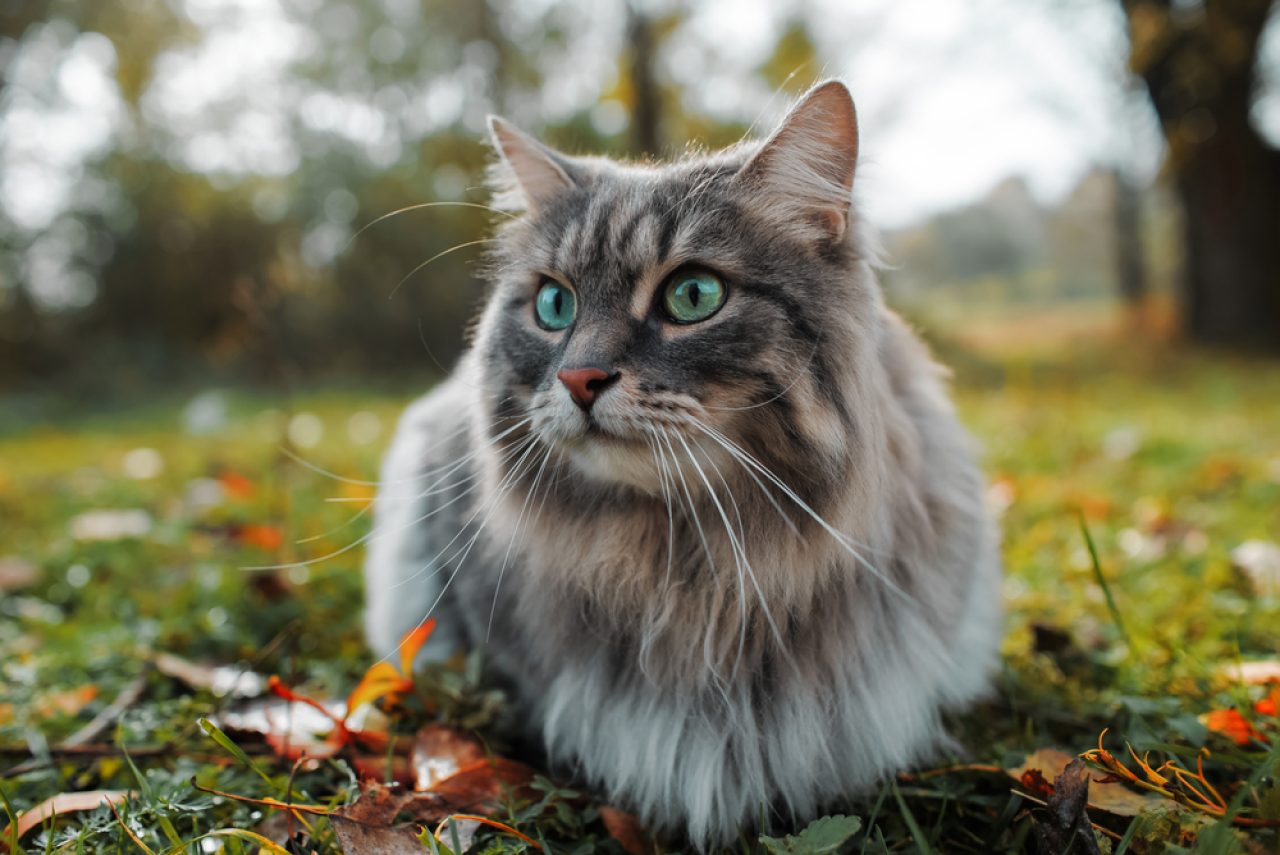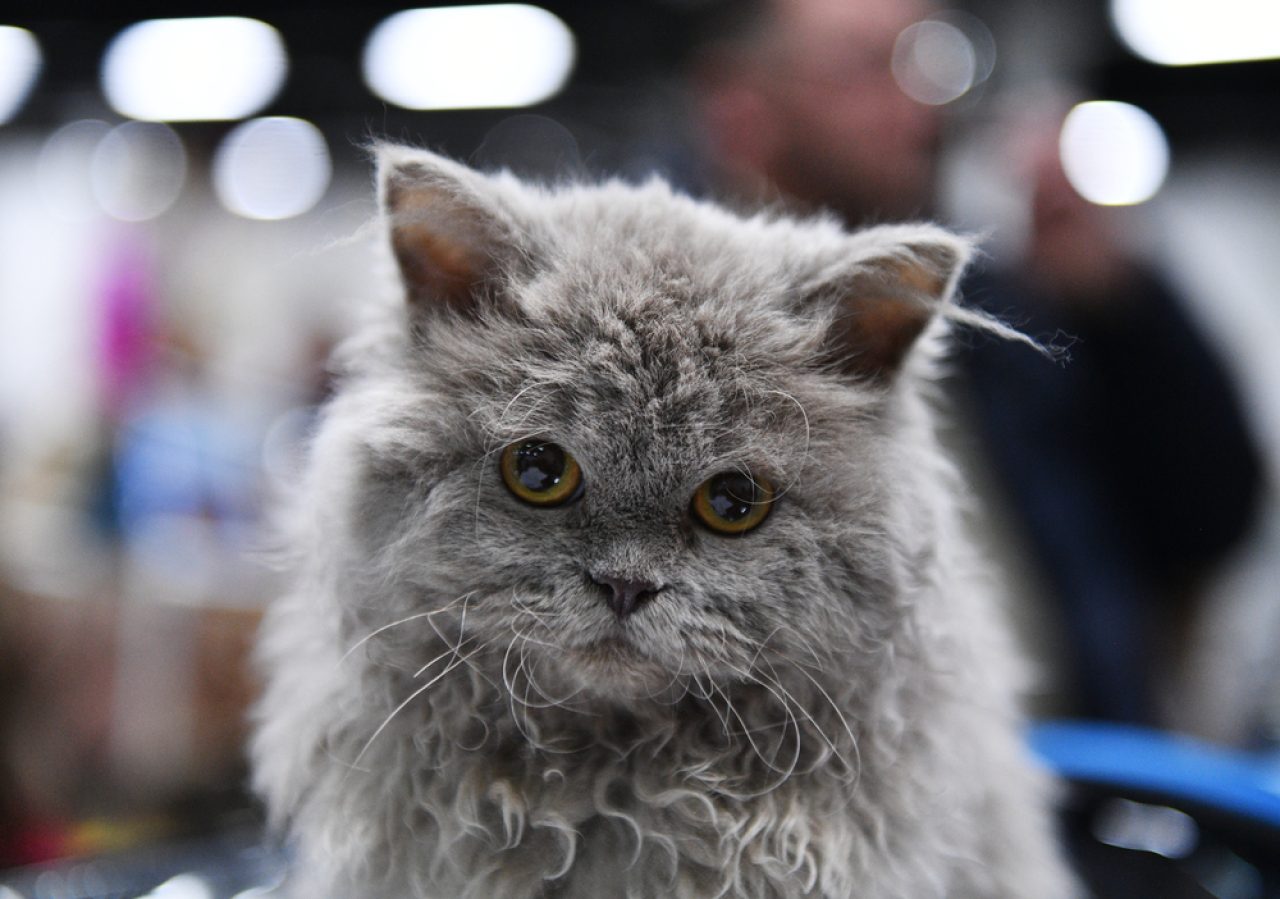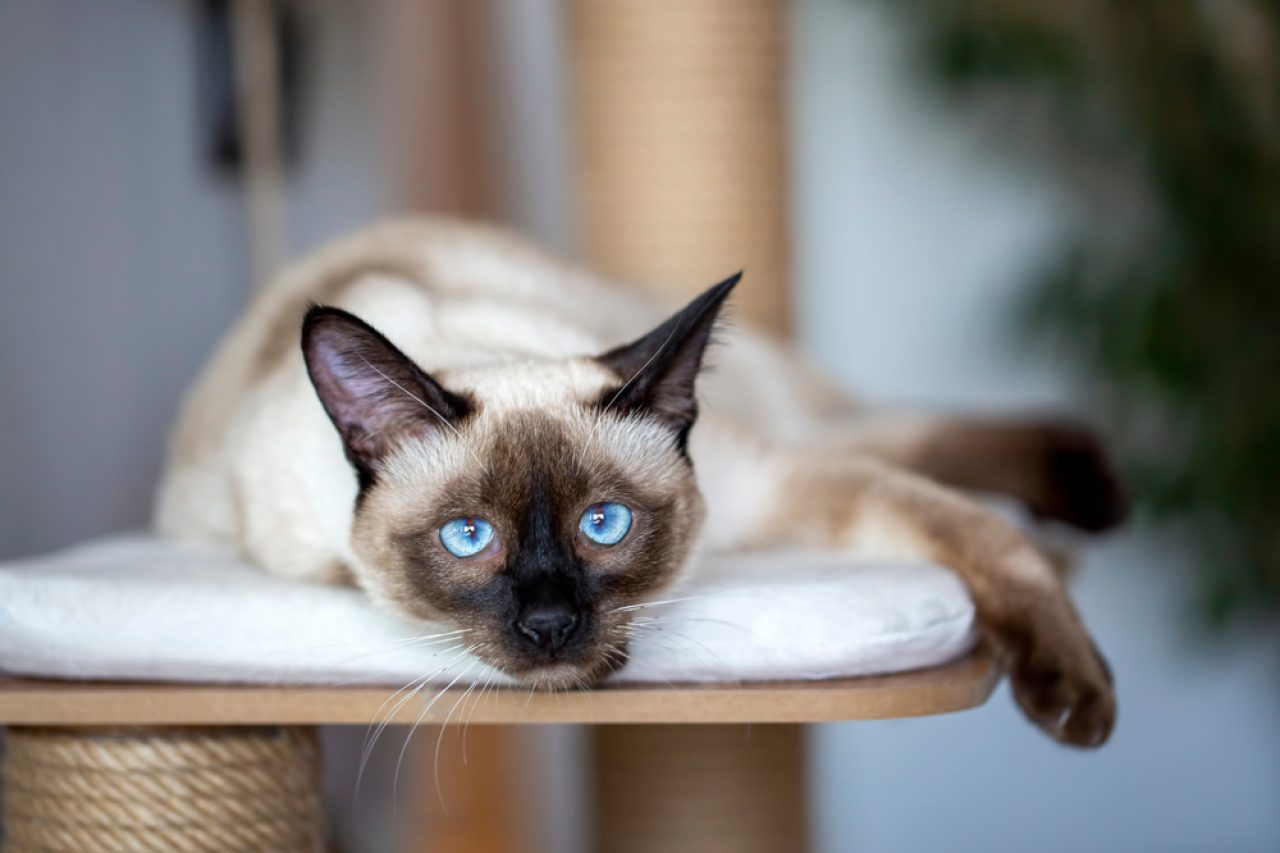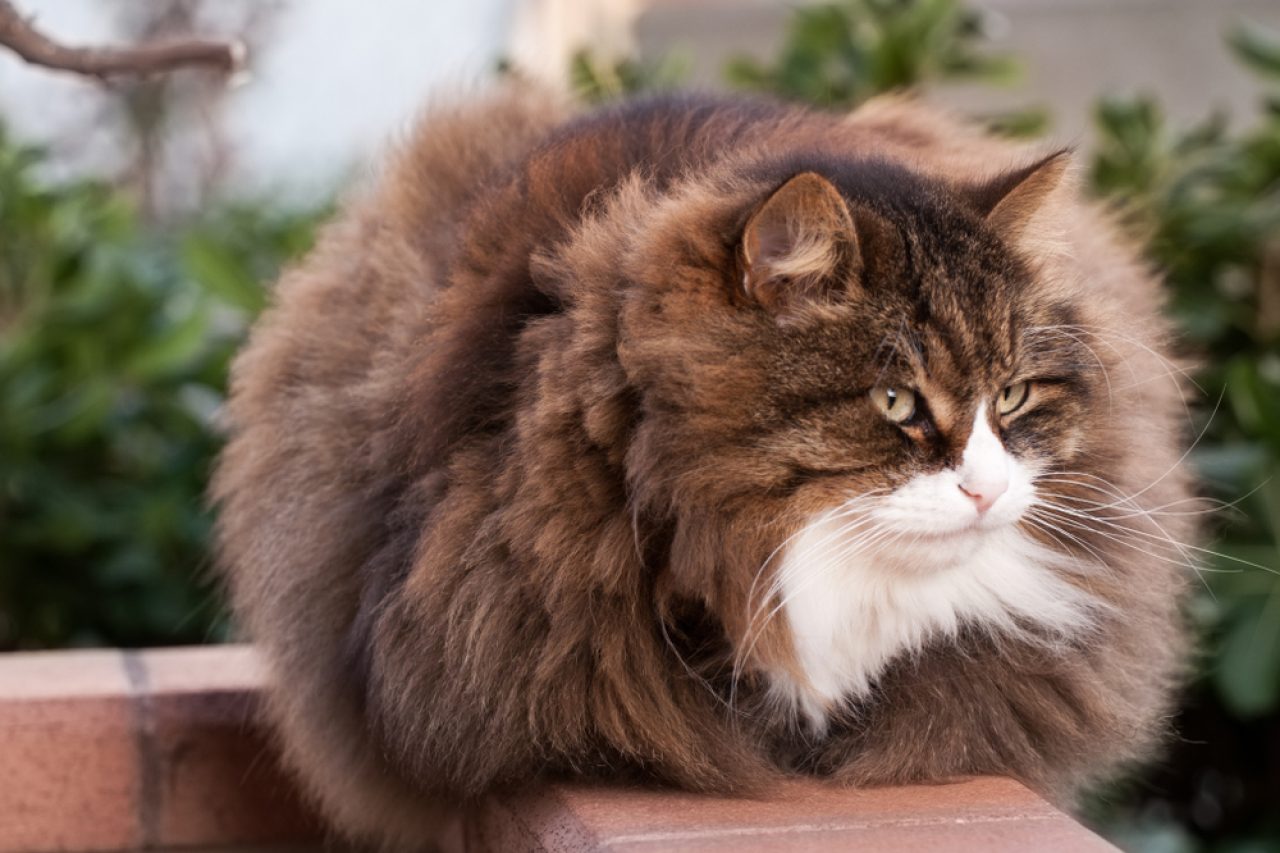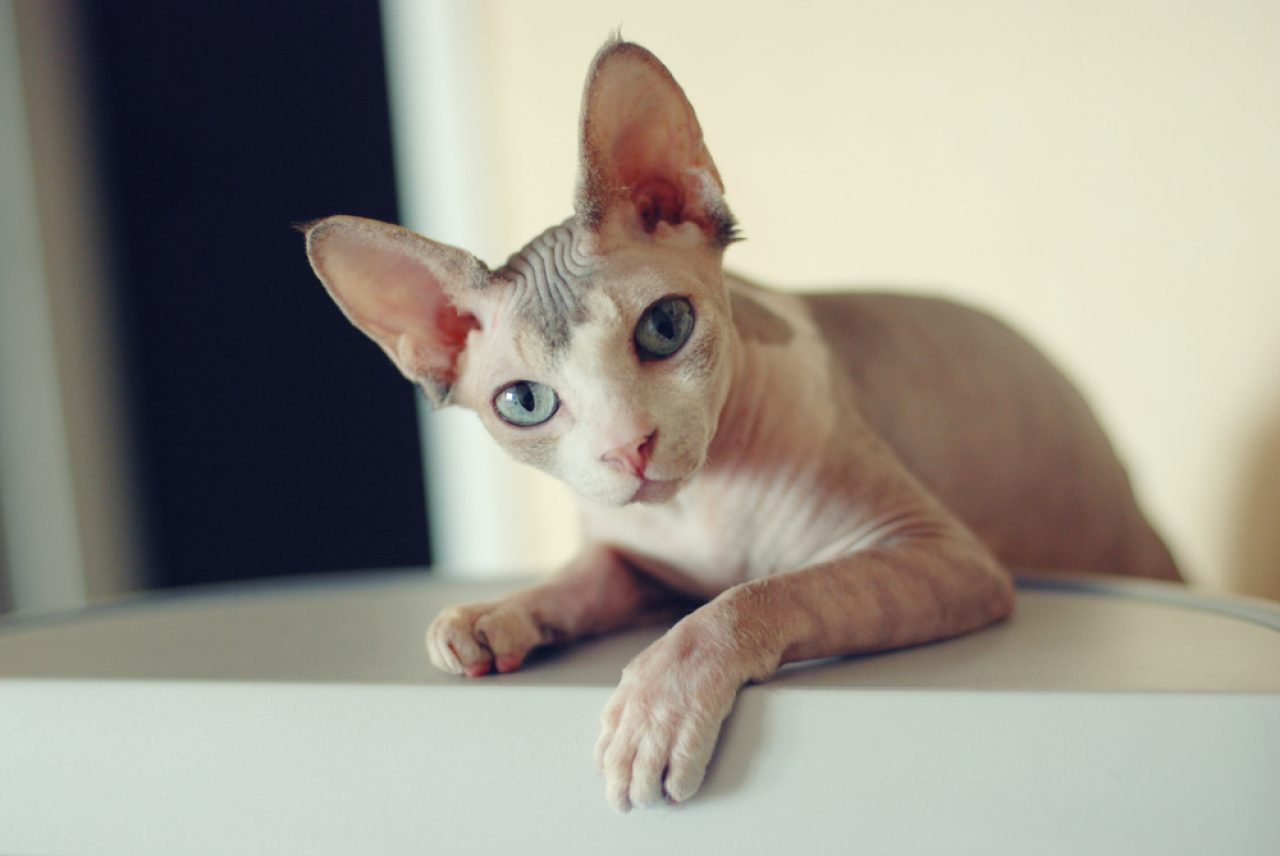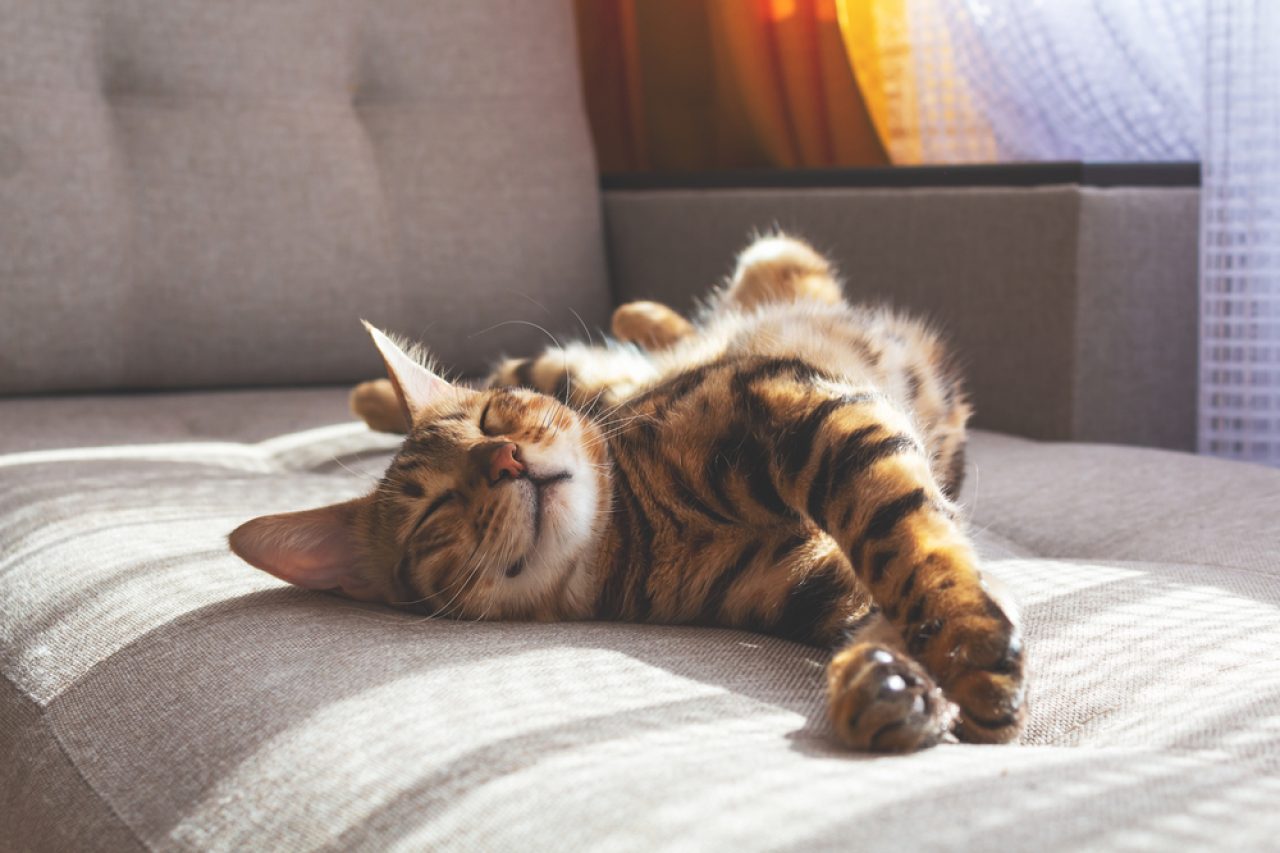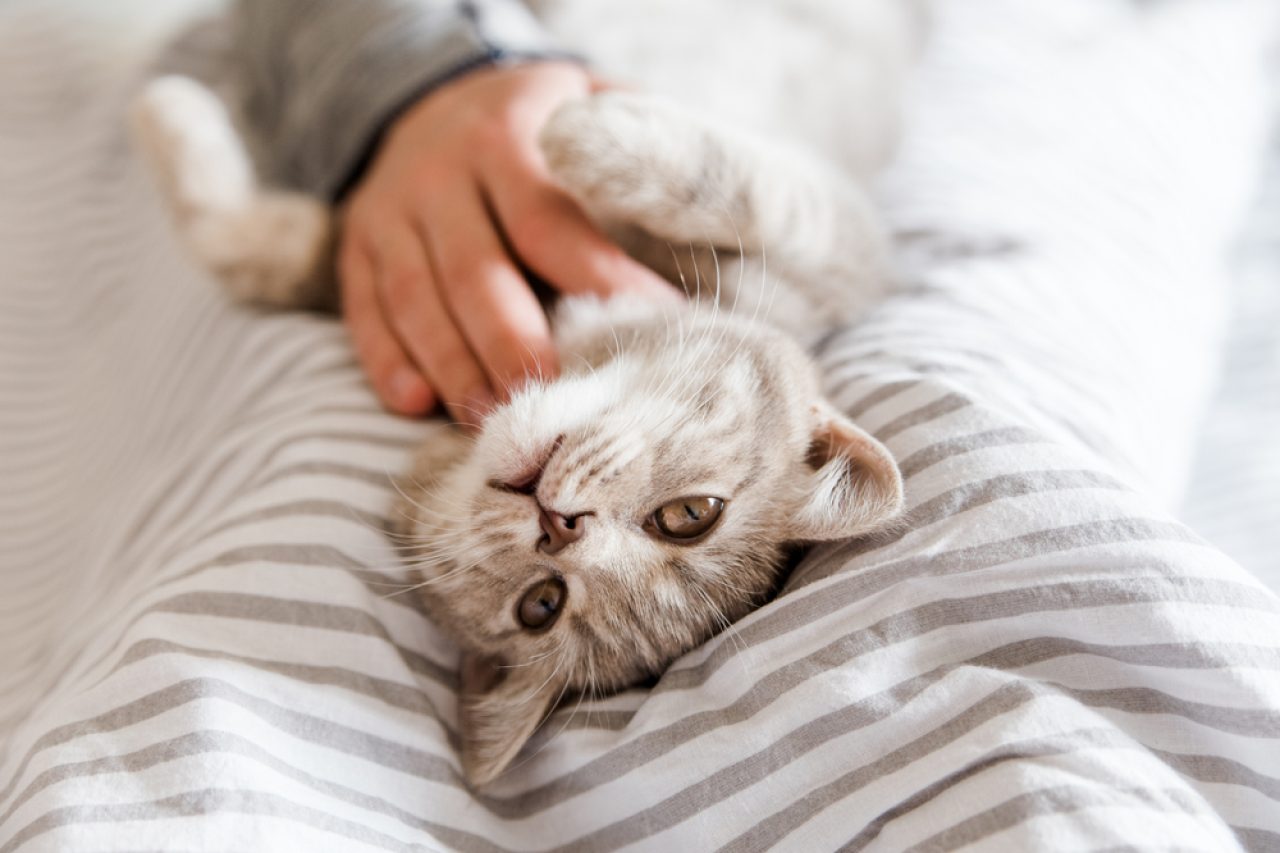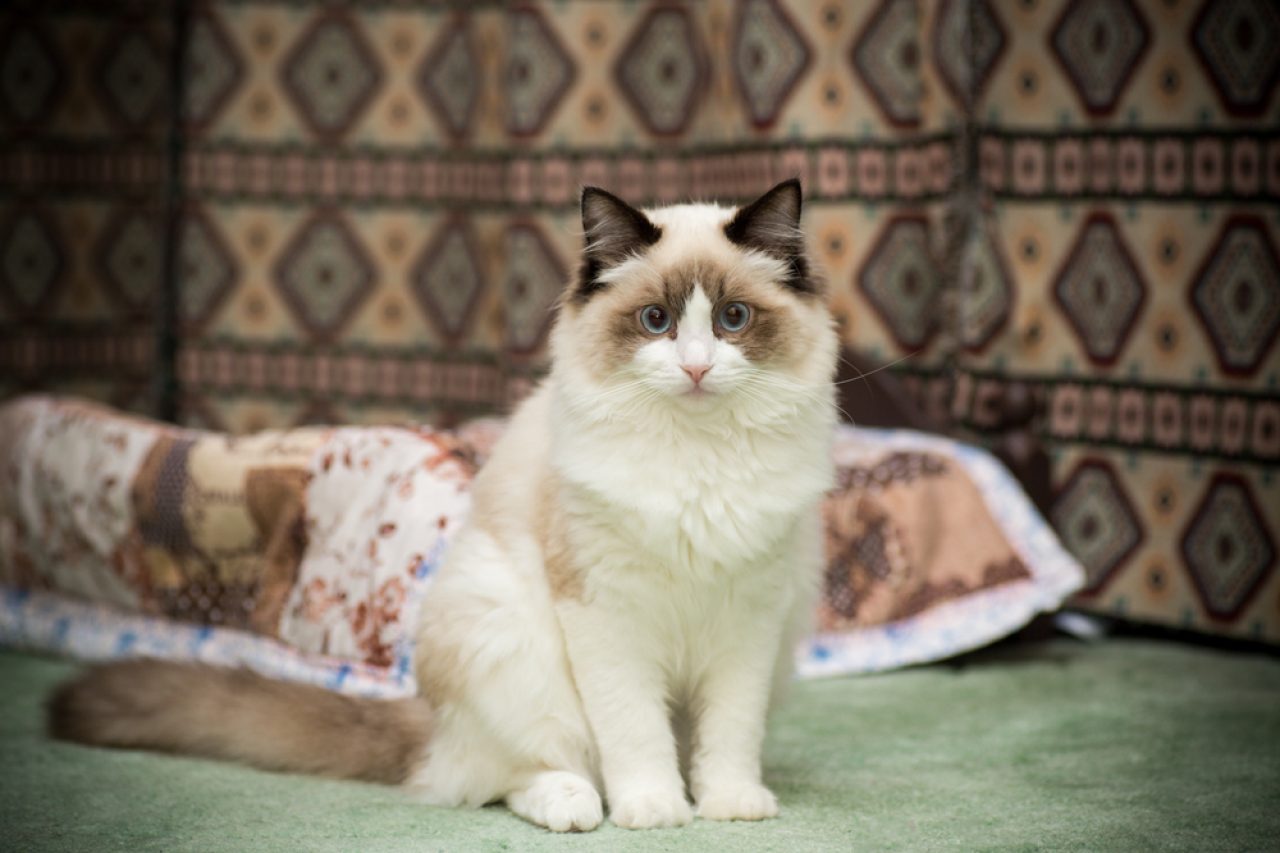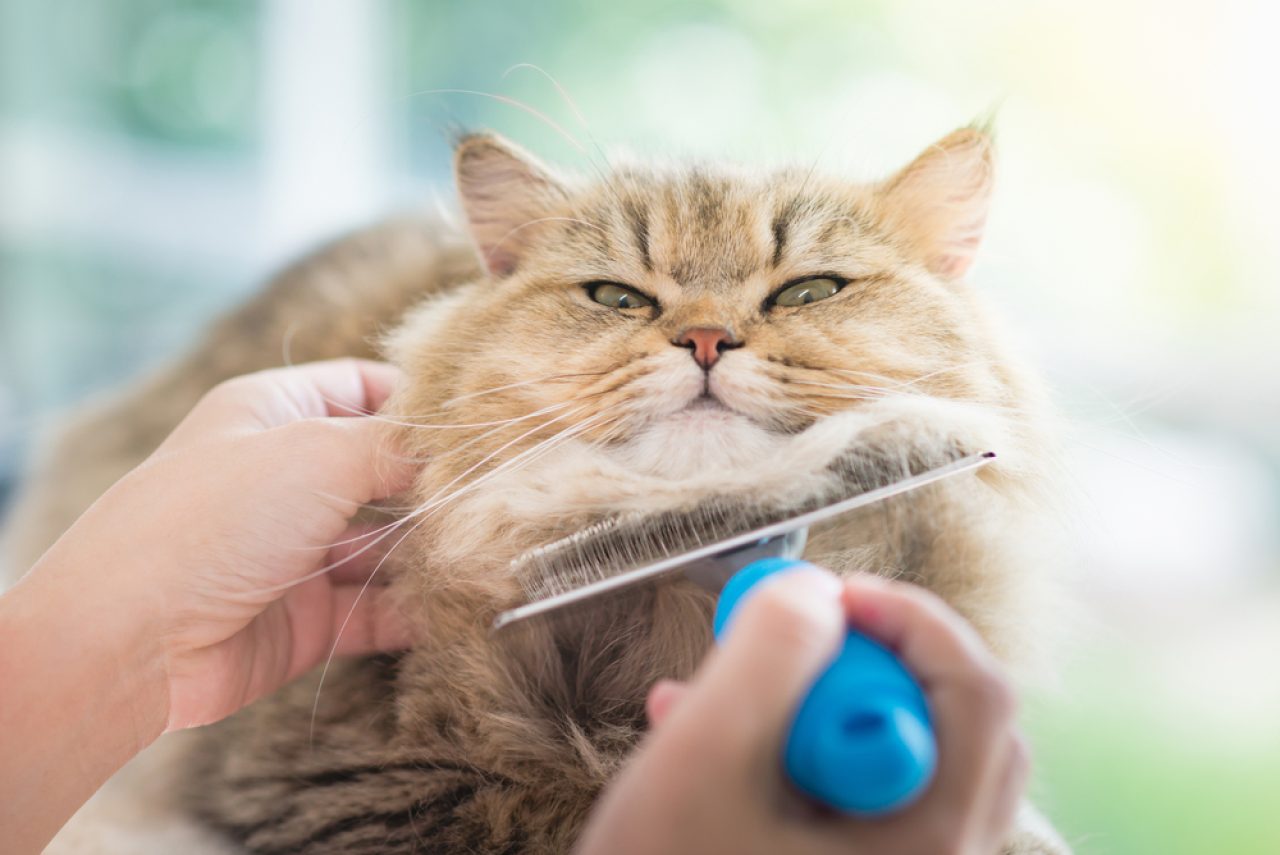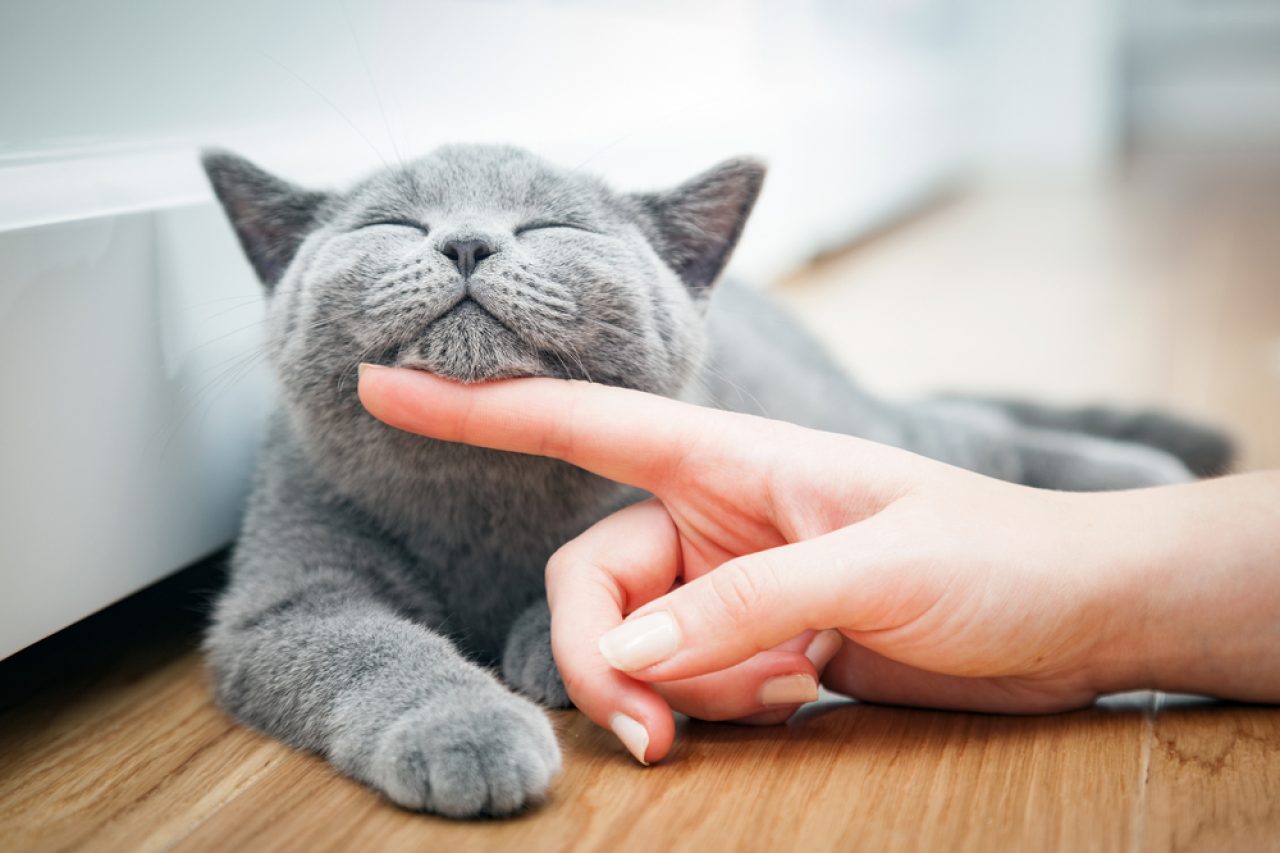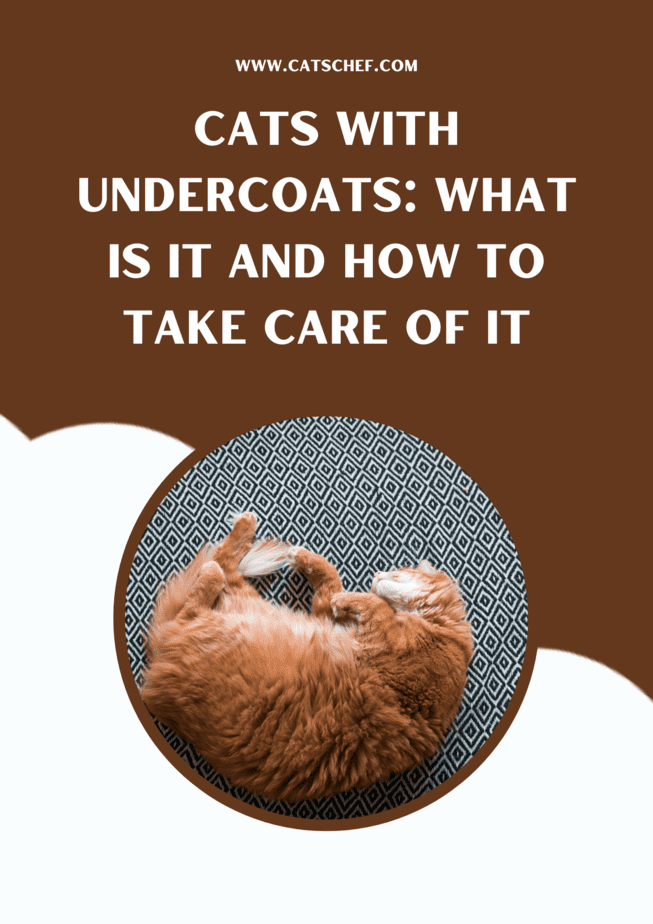📖 Table of Content:
We often see cats with undercoats and the first thing that comes to our mind is that it’s a lot of fur! You can’t help but picture all those hairs flying around the house.
However, it’s a small price to pay in exchange for the love you and your feline share. When she climbs up on your lap and you tangle your fingers in her soft fur, the mess is the last thing on your mind.
Who cares for a few hairballs here and there? Who cares that your once black couch turned white because it’s covered in your cat’s fur? At the end of the day, it’s all worth it!
But, we really can’t help but wonder where all these undercoats come from and what’s their true task. We might assume that it’s just the way our felines are made.
There’s actually more to this beautiful coat than what meets the eye. It’s not just one of their remarkable physical characteristics.
Cats with undercoats might look the same as the cats that don’t have one. However, if you take a closer look and peek into the details regarding their under layer of fur, you’ll soon notice many differences.
What are the types of cat coats?
There are different types of cat coats because felines never cease to amaze us. Of course, this leads us back to the very beginnings of the cat world.
Their coats depend on the breed and every single cat breed is unique. There are cats with undercoats and those without, and each instance happened for a reason.
Perhaps your pet is a Siberian Maine Coon who developed in a harsher climate than a Siamese cat. Consequently, she’d need a thicker and longer coat to protect her from the weather.
It’s kind of similar to humans. Some people have curly hair due to their ancestry whereas others have ginger hair for instance. We all look a bit different, but for a reason.
What’s more important is that each cat is unique and beautiful in its own way, just like humans are. Therefore, there were a lot of things in the past that shaped the cat you have today.
It isn’t just the coats we’re talking about. The environment created certain breeds to sustain the challenges it presented them with. Therefore, we have felines that are of different sizes and colors, and with different personality traits. But that’s a story in itself.
1. Curly-haired cats
Curly-haired felines or rex cats, as they’re sometimes referred to, aren’t something you see every day. They have unusual, but beautiful fur which is a result of genetic abnormality.
Now, there’s nothing wrong with them as these curly creatures aren’t sick. In fact, numerous animals, including horses, rats, rabbits, dogs, and cats, carry the gene for curly hair.
A natural genetic mutation changes the hair’s structure. This turns it from straight to curly. If we didn’t know any better, we’d assume these babies somehow got to our hair curler because the curls are just purrfect!
Since this doesn’t happen often, just four rex cat breeds have received formal recognition from the largest breed organizations.
This genetic mutation is very unique, so each one of these breed’s coats has a different texture. Of course, there are curly cats with undercoats.
However, some kinds of curly-haired cats, such as the Devon Rex, don’t have an undercoat. Their only coat of fur is made up of guard hairs which is why it’s so velvety.
On the other hand, other curly-haired felines, such as the Selkirk Rex, have thick coats that can be either short or long. Next to these two, we’re also blessed with the LaPerm and Cornish Rex beauties.
They’ve been nicknamed a “Poodle Cat” because of the curls that resemble a Poodle. Moreover, their personality is also dog-like, just like a Maine Coon’s.
2. Short-haired felines
The short-haired cat is likely the most prevalent breed of domestic cat. Usually, the short coat is the first association you get when you think of a feline.
These furbabies have the conventional double coat, which consists of an undercoat and a topcoat. You might think that this is what makes them shed less, but unfortunately, you’re wrong.
Just like with long-haired cats, the topcoat of a short-haired feline serves a defensive purpose, or in other words, a life-saving tool. The undercoat of these cats doesn’t have any less of a serious task and serves to keep the cat warm.
Usually, felines’ short coats may grow up to two inches long but nothing more. They don’t need to have long fur in order to look beautiful. Just take a look at the Siamese cat, for instance!
It might be unfortunate for pet owners, but this doesn’t mean less hair all over the place. Short-haired cats still lose their hair regularly.
However, there won’t be any dramatic blowouts like with long-haired cats. Still, be prepared for some regular brushing and maintaining your pet’s fur.
One of the benefits of short-haired cats with undercoats is how quick and simple it is to take care of them. These furry companions will make it much easier for you to inspect them for fleas, ticks, and other non-welcomed residents.
A short-haired cat can be the ideal choice if you’re looking for a low-maintenance animal when you aren’t too familiar with taking care of them. The thing is that they don’t need daily maintenance like long-haired cat breeds since, obviously, their coats are short.
Instead, they just require routine brushing to maintain the condition of their coats and lessen shedding. Also, short-haired cats with undercoats do a pretty good job of maintaining and grooming themselves.
3. Long-haired beauties
Long-haired cats can also come with undercoats. Just as is the case with the short-haired cat’s coat, these two layers, undercoat, and topcoat, make a great protective shield.
One protects from the enemies and potential wounds and cuts, whereas the other layer protects your furbaby from the harsh climate. Obviously, long-haired cats’ fur is way longer than short-haired’s.
Therefore, it may grow up to nine inches long but this isn’t a strict rule because each feline is unique, remember? Norwegian Forest Cats and some other breeds, such as Ragdolls and Maine Coons, are among the longer-haired cat breeds.
It goes without saying that long hair needs more attention and calls for frequent brushing and general maintenance. Sure, these meticulous creatures have regular grooming sessions as their hygiene is their main priority.
However, they sometimes need help with keeping their majestic fur shiny and healthy. Long-haired felines, especially those cats with undercoats, might have trouble brushing out their coats from time to time.
These felines are more prone to get mats and the fluffy fur has the tendency to get tangled a lot, especially if you can’t keep your hands off your little cloud. Therefore, some people may find the lengthy coat to be a deal-breaker because not everyone is prepared to handle it.
Additionally, all of the grooming can cause the pet’s tummy to fill with hair. Long-haired cats are likely to vomit hairballs or clumps of the coat from time to time because the hairs aren’t digestible.
If you find this to be a difficult effort, I advise going to the groomer sometimes. This might reduce the excessive shedding of your pet.
Either way, cats with undercoats are all beautiful because their furs look lavishing. However, it all comes with a price, if you’re willing to pay for it.
4. Hairless cats
I know what you’re thinking. The Sphynx, of course! You’ve probably already seen the beautiful, hairless breed. I’m not going to lie, you’re either a huge fan or you find them scary.
However, we came to talk about their fur, and guess what? There isn’t any. So weird, right? We’re so used to seeing cats with undercoats or those with only one layer.
All of a sudden, here comes the naked cat to oppose all of the rules. Hairless cats only have a very thin coating, similar to baby hair in humans.
This layer is called vellus, which is a really unique form of hair very different from any other cat’s. However, you might assume that the lack of fur might bring some trouble, and you’re right.
Sphynx cats and other hairless breeds who have no topcoats or undercoats, find it hard to control their body temperature. Unfortunately, they lack an undercoat, which takes away their additional protection and warmth.
Because of this, if you own one of these lovely animals, you should give it a blanket when it’s chilly outside, dress it for walks, and take care of its personal hygiene.
Contrary to popular belief, hairless cats aren’t hypoallergenic. They continue to create the allergen Fel d1, which is present in saliva and dander. Therefore, it causes allergic responses in those who are sensitive to cats.
However, the good news is that naked breeds create lower amounts of allergen. As a result, some allergy sufferers may be able to live with a cat that has no fur.
Still, if there’s one positive thing about having a hairless cat, it’s having your furniture void of any sticky cat hairs. Unfortunately, this doesn’t mean they should get less attention and care than cats with fur and undercoats.
What about the topcoat?
Before we get to the basics of the cats’ undercoats and their purpose, we first must administer the top layer. It’s the first thing we see and feel when it comes to these beautiful creatures.
The top coat of this fascinating species is made up of a variety of additional hair types. These just might be more important than you would think.
It’s crucial that we explore and learn about these hairs because they play a key role in a cat’s life. A feline’s preferred temperature is largely influenced by the sort of coat it has.
Therefore, in order to provide your furry best friend with the best environment possible, it really comes in handy when you understand the type of her coat.
1. Awn hairs
The majority of the fur we see on our cats is made up of awn hairs, which are also a component of the topcoat. This layer also adds to the fur thickness of cats with undercoats.
Also, it’s not unusual to read that some cats have three coats. The major reason for this is that although most sources concur they are a component of the topcoat itself, others choose to list the intermediate coat that the awn hairs produce as a distinct layer.
Therefore, this says a lot about these hairs’ importance. Awn hairs take on the functions of both guard and down hairs. This implies that the cat is shielded from the cold, water, sunlight, and radiation, all thanks to the awn hairs.
These hairs are typically twice as long as guard hairs but shorter than down hairs. Thank you, awn hairs, for doing what you do for our felines!
2. Guard hairs
Woah, what a cool name. What are they guarding? The magnificent and beautiful princess that you call your cat? Definitely! This type of hair is another important component of your feline’s topcoat. These hairs are stiff, lengthy, and coarse.
All cat breeds, including those with undercoats, have guard hairs. The only difference is that not all of them are equally long or as dense. Additionally, young kittens lack guard hairs, but as they become bigger, this layer begins to develop. Perhaps they just might be aliens in disguise?
This layer of hair serves as a shield, once again. It has the ability to resist liquids and protect felines from the sun and its rays. Along with the gloss, it also decides the fur’s predominant hue. Additionally, the guard hairs aid cats in learning about diverse environmental cues.
3. Vibrissae
The only other sort of hair you’ll see on cats is their vibrissae, or the more popular term, whiskers. These are the cute hairs on their faces, above their eyes, on the borders of their legs, and on either side of their noses.
Even though they grow from hair follicles like other hairs, whiskers are particularly noticeable on a cat’s body. The roots of whiskers are up to three times deeper than those of normal hair, and they are rougher and thicker.
In contrast to normal hair, whiskers don’t completely cover the cat’s body. Instead, they’re strategically placed on the chin, on the forelegs, over the top lip, next to the ears, and above the eyes. It’s really hard to miss them!
This might depend on the breed of the cat, but most felines have 12 whiskers on each cheek, grouped in four rows. What a way to stand out among all that hair!
Next to standing out, vibrissae have an important function in the cat world. Perhaps even more essential than other hairs. Your cat’s whiskers serve as a sensory organ and aid in movement.
Whiskers are more sensitive than normal hair since their follicles are filled with many nerves. We could compare them to a person’s fingertips. You can then conclude that cats learn about the world around them from their face.
How are cats with undercoats different?
So far, we’ve learned that a topcoat and an undercoat make up the majority of cats’ double coats. Both of these are essential for your pet’s health.
Moreover, these two work in pairs to help keep your feline safe and sound; whether from other animals or climate. It all depends on your cat’s coat whether she’ll shiver at night or not.
It’s important to understand the type of coat your feline has so you can maintain it according to its needs. As we already mentioned, it’s not the same experience having to deal with long and short hair, for instance.
But what is it? How are cats with undercoats different than those without?
Long story short, the innermost layer of a cat’s hair, closest to the skin, is called the undercoat. It’s incredibly delicate and short and it’s the thing that makes you melt on the spot. However, this coat isn’t there only to be looked at and admired.
It needs special care and attention because it’s so important to your feline. It keeps your furry baby safe from outside factors, so I’d say you better take care of it, especially if you have an outdoor cat who likes to go on adventures.
The undercoat forms the foundation layer and is covered by longer hairs that make up the topcoat. Also, it’s important to state that this coat layer is closest to the skin.
One of the advantages of cats with undercoats is their ability to stay warm during cold periods of the year. They control their body temperature so effortlessly, whereas we can’t say the same for hairless felines.
How to take care of cats with undercoats?
Just as it’s crucial to have it during cold days, it’s also important to remove the undercoat during the warmer months.
Cats often go through the natural process of shedding on their own. However, as an indoor cat, your pet with an undercoat might need some additional help with this task.
Regular grooming sessions are crucial because they reduce the amount of hair your cat can consume, lowering the risk of hairballs. Cats who groom themselves by licking and biting down on their fur consume a lot of hair.
Consequently, this congeals into hairballs that your feline eventually needs to vomit. They need to come out one way or another! This might not be a pleasant sight but it’s a must. Regular brushing is supposed to limit the risk of hairballs which might prevent the development of certain diseases.
Obviously, cats with long hair tend to tangle more frequently. If you don’t take care of your cat’s coat, this could cause some serious trouble, especially for cats with undercoats.
Therefore, it’s recommended to brush your cat’s hair frequently to avoid tangles. Brushing on time will prevent mats and tangles and will definitely save you a lot of your time.
Mats, like tangles, are more common in long-haired felines. Don’t let this fool you because there’s still a chance of matting with shorter hair as well.
If this problem isn’t taken care of, it can quickly set the ground for other health issues. Otherwise, regular brushing will save the day.
It lowers the likelihood of matting and stops your cat from developing skin irritations, dead skin, loose hair, and other problems that might lower the quality of their life.
Bottom line
Cats with undercoats have a lot of benefits. On the other hand, there might be some downsides to having this much fur. Sure, it’s great for temperature regulation, but it can sometimes be a pain in the neck.
For instance, long-haired or curly-haired cats require daily brushing to prevent tangles, matting, knots, and other related problems. Doing this will maintain your cat’s health and silky, lustrous fur.
Contrarily, short-haired cats don’t require daily brushing, but it’s still crucial to at least examine your cat’s fur every day. You should brush your cat more frequently if you notice issues like tangles or mats.
For those who have allergies, this can be highly harmful. However, regular brushing is essential for healthy fur. In addition to keeping your cat’s fur tidy and glossy, undercoat removal is crucial so you can more easily examine your cat’s fur for fleas and ticks and take immediate action if necessary.
You will surely lessen the amount of hair around your house with regular and appropriate maintenance. You run the danger of having hair and dander all over your home if you let your cat do the task on her own, so don’t hesitate to lend a helping hand!
